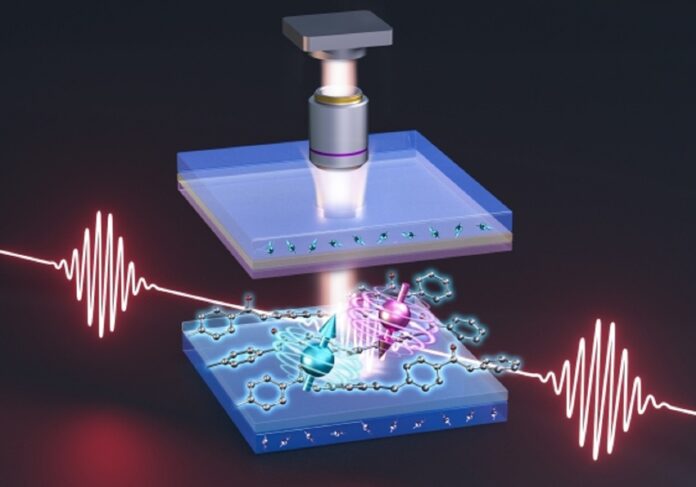Magnetic field sensing and mapping are important for a wide range of scientific and technological applications in physical and biological systems. Compared to traditional methods, quantum sensing techniques have significant advantages, such as high sensitivity in field detection and high spatial resolution in field mapping.
Magnetic field quantum sensing and imaging have generated interest due to their potential for high sensitivity and spatial resolution. Systems that are commonly used call for laser excitation or cryogenic temperatures present difficulties for chip-scale integration and commercial scalability. This study presents an integrated solid-state magnetic field imaging sensor based on an organic light-emitting diode (OLED) that uses spatially resolved magnetic resonance to produce a reliable magnetic field map.
OLEDs are a novel display technology that offers some of the highest screen quality in smartphones and televisions.
According to UNSW Sydney researchers from the ARC Centre of Excellence in Exciton Science, Organic light-emitting diodes (OLEDs) may be used to scan magnetic fields. This finding has important applications for use in the healthcare and industrial sectors.
This technology uses OLEDs, a semiconductor material usually found in flat-screen televisions, smartphone screens, and other digital displays, to generate visible light when degraded.
Dr. Rugang Geng said, “Our findings show that OLEDs, a commercially available technology, can be used not only for displays and lighting but also for quantum sensing and magnetic field imaging by integrating a small piece of microwave electronics. If this technology is properly developed, people could use their smartphones to map the magnetic fields around them, for example, to spot defects in diamonds or jewelry. This also has applications in industry, such as finding defects in construction materials or as a biomedical sensor.”
He added, “The basic working principle of an OLED device is that when a voltage is applied, electrons and holes are injected into different layers of the device. When the electrons and holes meet in the central layer, they form ‘excitons,’ which emit visible light when they decay, and that’s what makes OLEDs useful as displays and lighting sources.”
This light emission technique takes advantage of the charge properties of electrons, which have a negative charge, and holes, which have a positive charge, as well as an intrinsic property known as spin.
This spin can ‘flip-flop’ (or switch direction) under magnetic resonance conditions and is particularly sensitive to external magnetic fields. This technique has industrial applications, such as detecting faults in construction materials or as a biological sensor.
The researcher said, “By measuring the signal change, both in electric current and emission light, induced by such a flip-flop, we can detect the strength of any magnetic field the device is exposed to.”
Dr. Geng, Prof. McCamey, and their colleagues created a small oscillating magnetic field over an OLED device, allowing every pixel to operate as a small magnetic field sensor.
Prof. McCamey said, “We weren’t surprised at the result – we have been pursuing this for a few years, But we were surprised at the resolution of the images we could make – we can see details on sub-micron length scales, similar to the size of a bacteria or neuron.”
The images’ resolution may be viewed on sub-micron length scales comparable to a microbe or neuron size. This study is the next stage in advancing magnetic field imaging equipment. Existing quantum sensing and magnetic field imaging equipment are usually huge and costly, requiring either additional power from a high-powered laser or extremely low temperatures.
However, the new method created by the scientists can operate at a microchip scale and doesn’t require input from a laser, suggesting significant promise for applications in scientific research, industry, and medicine.
He said, “Next, we hope to improve the overall performance of the device, including optimizing the device architecture and exploring other techniques that can significantly increase the field sensitivity. We are also exploring collaborations with OLED technology companies as their experience moving devices from the lab to commercial products will help accelerate the translation of this technology.”
Journal Reference:
- Rugang Geng, Adrian Mena, etal. Sub-micron spin-based magnetic field imaging with an organic light emitting diode. Nature Communications. DOI: 10.1038/s41467-023-37090-y
